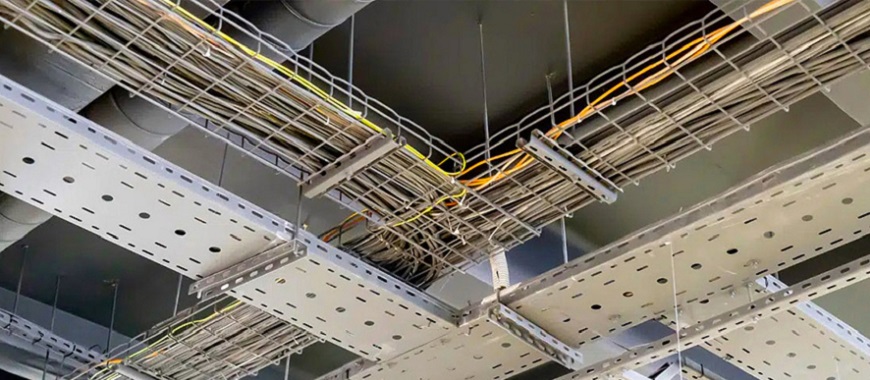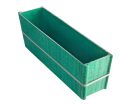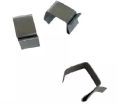
A cable tray for positioners is an essential component in modern positioning systems, designed to organize and protect cables effectively. It provides a structured pathway for cables, preventing tangling, wear, and potential damage. Proper cable organization is critical in positioning systems, as it ensures uninterrupted performance and reliability, particularly in precision-driven applications such as robotics, industrial machinery, and automation. A cable tray for positioners enhances system efficiency by keeping cables securely in place, reducing maintenance time, and facilitating easier troubleshooting. By investing in a high-quality cable tray for positioners, industries can improve safety, extend the lifespan of cables, and optimize the overall functionality of their positioning equipment.
Choosing the Best Cable Tray for Positioners
Selecting the right cable tray for positioners is critical for ensuring optimal performance, safety, and longevity in various industrial and commercial applications. A well-chosen cable tray for positioners provides efficient cable management while protecting wires from damage and ensuring seamless operations. Below, we explore the key considerations for choosing the most suitable cable tray for positioners and highlight essential features.
Evaluating Tray Size for Positioners
The size of the cable tray for positioners plays a significant role in determining its efficiency and compatibility with the application. Key factors to consider include:
- ensuring the tray dimensions can accommodate the number and size of cables required for the positioners
- considering future expansions or upgrades by selecting a tray with additional capacity for extra cables
- maintaining adequate spacing between cables to prevent overheating or electromagnetic interference
- verifying compatibility with the physical constraints of the installation area, such as height, width, and length
- choosing trays that allow easy access for maintenance, ensuring cables can be managed without disruption
Material Selection for Cable Tray for Positioners
The material used in a cable tray for positioners affects its durability, cost, and suitability for specific environments. Common materials and their benefits include:
- aluminum, known for its lightweight properties and resistance to corrosion in indoor and outdoor applications
- stainless steel, offering high strength and resistance to harsh chemicals and extreme temperatures
- fiberglass-reinforced plastic (FRP), an excellent choice for environments requiring non-conductive and corrosion-resistant materials
- galvanized steel, providing durability and rust resistance in standard industrial settings
- PVC-coated options, offering insulation and protection against moisture or chemical exposure
Load Capacity Considerations for Positioner Cable Trays
The load capacity of a cable tray for positioners must align with the weight of the cables and any additional components. Important considerations include:
- determining the total weight of the cables to ensure the tray can handle the load without sagging or failure
- accounting for dynamic loads, such as movement or vibration, that may affect the tray’s stability
- ensuring that the tray design includes reinforcements, such as crossbars or thicker side rails, for heavy-duty applications
- selecting a tray with a safety margin above the estimated load to prevent overloading in unforeseen circumstances
- consulting experts like GangLong Fiberglass for tailored solutions that meet specific load requirements
Customizing Cable Tray for Positioners to Meet Unique Needs
A customized cable tray for positioners can address specific challenges and enhance performance in specialized applications. Customization options include material finishes, tray design, and added features.
Advantages of Tailored Cable Trays for Positioners
Customized cable trays for positioners offer several benefits, including:
- improving efficiency by creating a design that matches the exact layout and configuration of the installation
- reducing installation time by delivering pre-fabricated solutions designed for specific project requirements
- enhancing aesthetics in visible installations with polished or painted finishes
- incorporating advanced features like integrated dividers or built-in grounding mechanisms
- offering modular designs that simplify future expansions or modifications
Adding Features to a Cable Tray for Positioners
Specific features can enhance the functionality and usability of a cable tray for positioners. Key additions include:
- cable retainers to secure wires in place and prevent accidental disconnections
- dividers to separate cables by type or function, reducing interference and improving organization
- end caps to protect open edges and ensure cable safety
- grounding kits to maintain electrical safety in high-voltage installations
- support brackets or suspension systems for unique positioning requirements
Considering Environmental Factors for Positioner Cable Trays
Environmental conditions play a significant role in determining the longevity and performance of a cable tray for positioners. Key considerations include:
- selecting materials resistant to moisture or chemicals in corrosive environments
- opting for fire-retardant trays in high-temperature settings to ensure compliance with safety regulations
- choosing UV-resistant coatings for outdoor applications to prevent degradation from sunlight exposure
- installing sealed cable trays in dusty or debris-prone areas to maintain cable cleanliness
- ensuring adequate ventilation in areas prone to overheating or humidity
The Key of Maintaining a Reliable Cable Tray for Positioners
Maintaining a cable tray for positioners is essential for ensuring its durability and the smooth operation of connected systems. Regular upkeep and monitoring help prevent issues and extend the lifespan of the tray and cables.
Conducting Regular Inspections
Routine inspections of a cable tray for positioners help identify and address potential issues early. Recommendations for effective inspections include:
- checking for physical damage such as dents, cracks, or corrosion on the tray surface
- verifying the integrity of cable connections and ensuring no wires are exposed or frayed
- ensuring all accessories, such as retainers and dividers, are securely in place and functioning correctly
- inspecting grounding mechanisms to maintain compliance with electrical safety standards
- replacing worn or damaged components promptly to avoid operational disruptions
Cleaning and Maintaining Tray Integrity
Keeping the cable tray for positioners clean helps maintain a professional appearance and ensures consistent performance. Tips for effective maintenance include:
- removing dust, dirt, or debris regularly to prevent accumulation that could affect cable performance
- using non-corrosive cleaning agents to maintain the integrity of coated or metallic trays
- inspecting fasteners and mounting brackets for signs of loosening or wear
- cleaning cable sleeves and dividers to enhance their longevity and functionality
- scheduling routine maintenance checks to ensure long-term system reliability
Enhancing Safety with Positioner Cable Trays
Safety enhancements can prevent accidents and ensure compliance with industry standards. Recommended measures include:
- ensuring cables are properly secured to avoid sagging or accidental contact with sharp edges
- using fire-resistant materials in high-risk environments to minimize potential hazards
- installing warning labels to indicate high-voltage cables or restricted access areas
- providing adequate spacing between cables to prevent overheating or electrical interference
- implementing anti-slip bases for trays installed in dynamic or high-traffic areas
Adapting Cable Tray for Positioners to Modern Applications
Modern industries require cable trays for positioners that can adapt to changing technologies and workflows. Incorporating advanced designs and features ensures that these trays remain relevant and effective in diverse settings.
Modular Designs for Flexibility
Modular cable trays for positioners offer unmatched flexibility, making them ideal for dynamic environments. Advantages of modular designs include:
- simplifying assembly and disassembly, reducing installation time and effort
- enabling easy modifications or expansions as equipment or system requirements evolve
- supporting unique configurations such as multi-level or curved layouts
- providing interchangeable components for quick repairs or replacements
- accommodating different cable types without the need for separate trays
Advanced Monitoring and Control Features
Integrating smart technology into cable trays for positioners enhances efficiency and reliability. Advanced features include:
- sensors to monitor cable temperature, tension, or performance in real time
- automated alerts for maintenance needs, reducing the risk of unexpected downtime
- compatibility with centralized management systems for streamlined oversight
- energy-efficient designs that minimize power consumption in large installations
- providing data-driven insights to optimize cable management strategies
Industry-Specific Customizations
Customizing cable trays for positioners to meet industry-specific needs ensures optimal performance and compliance. Examples include:
- incorporating EMI shields for sensitive electronic applications
- designing trays with non-conductive materials for environments with electrical risks
- providing reinforced trays for heavy-duty or high-vibration installations
- using weatherproof coatings for outdoor applications in extreme climates
- consulting GangLong Fiberglass for tailored solutions that align with unique operational requirements
Key Features of a High-Quality Cable Tray for Positioners
A cable tray for positioners serves as a critical component in managing cables for industrial and commercial applications. The right cable tray not only supports optimal system performance but also ensures safety and longevity. Understanding its features can help determine the best solution for specific requirements.
Corrosion-Resistant Materials for Extended Lifespan
Corrosion resistance is a crucial feature of any cable tray for positioners, particularly in harsh or outdoor environments. Key aspects include:
- utilizing stainless steel or galvanized coatings to protect against rust and degradation in humid conditions
- integrating fiberglass-reinforced plastic (FRP) materials, which offer non-corrosive properties suitable for chemically active areas
- ensuring UV resistance in outdoor applications to prevent material breakdown due to sun exposure
- reducing maintenance costs by extending the lifecycle of the tray, minimizing replacement frequency
- protecting cables from environmental factors that could compromise their integrity
Adjustable Configurations for Diverse Environments
Flexibility in design is essential for a cable tray for positioners, allowing it to adapt to varied installation scenarios. Benefits of adjustable configurations include:
- enabling custom layouts to fit unique space constraints or positioning system requirements
- accommodating multiple cable sizes and types without the need for separate systems
- supporting modular setups that can be expanded or reconfigured as needs evolve
- simplifying installation in complex environments, such as multi-level industrial plants
- allowing for quick and easy upgrades to integrate new equipment or technology
Compatibility with Advanced Positioning Systems
A cable tray for positioners must align seamlessly with the latest advancements in positioning technologies. Features that support compatibility include:
- providing sufficient load capacity to support heavy cables used in modern systems
- ensuring smooth cable routing to prevent interference or signal loss in sensitive applications
- integrating with smart monitoring systems to track cable performance and detect issues in real time
- incorporating secure fastening options to prevent movement during operation
- offering EMI shielding to protect cables in environments with high electromagnetic activity
Safety Enhancements in a Cable Tray for Positioners
Safety is a top priority in any cable management system. A high-quality cable tray for positioners provides multiple features to enhance safety:
- using fire-resistant materials to minimize risks in high-temperature areas
- implementing rounded edges and smooth finishes to prevent cable abrasion or injury during handling
- ensuring proper ventilation to reduce the risk of overheating cables during operation
- providing clear labeling or color coding for easy cable identification in emergency situations
- offering grounding options to eliminate electrical hazards in high-voltage setups
Cable Tray Orange Options for Industrial Settings
Applications of Cable Tray for Positioners
A cable tray for positioners is versatile and finds use in a range of industries, from manufacturing to technology-driven environments. Below are some prominent applications.
Manufacturing Plants
In manufacturing facilities, a cable tray for positioners plays an integral role in managing cables used for machinery and automated systems. Specific uses include:
- routing power and data cables for robotic arms or other automated positioners
- protecting cables from damage caused by vibrations or movement in high-activity zones
- ensuring quick access for maintenance or troubleshooting without disrupting operations
- organizing multiple cables to prevent tangles or interference in densely packed environments
- supporting cables used for heavy machinery, maintaining alignment and safety
Healthcare and Medical Facilities
In healthcare environments, precision positioning systems require reliable cable management. A cable tray for positioners ensures:
- clean and organized cable routing in sterile medical equipment setups
- compliance with safety regulations by preventing loose cables in sensitive environments
- easy maintenance and upgrades of positioning systems used in diagnostic or surgical equipment
- protecting sensitive cables from interference, ensuring accurate data transmission
- facilitating efficient integration of new medical technologies into existing systems
Data Centers and IT Infrastructure
Positioning systems in data centers demand a robust cable tray for managing power and network cables. Key contributions of a cable tray for positioners include:
- ensuring structured cable routing to maximize airflow and cooling efficiency
- supporting high-density cable setups while maintaining accessibility for technicians
- minimizing downtime by keeping cables secure and organized during upgrades or repairs
- reducing electromagnetic interference, which can compromise network stability
- enabling scalable solutions for growing data center demands
Renewable Energy Projects
In renewable energy projects, a cable tray for positioners ensures effective cable management for solar panels, wind turbines, and other systems. Benefits include:
- protecting cables from harsh environmental conditions such as wind, rain, and temperature fluctuations
- routing cables efficiently to connect power generation equipment with storage or distribution systems
- supporting positioning systems that align solar panels for maximum energy efficiency
- facilitating quick repairs or maintenance in remote or hard-to-access locations
- enhancing the overall reliability and safety of renewable energy systems
Aerospace and Automotive Industries
Positioning systems in aerospace and automotive manufacturing require advanced cable management. A cable tray for positioners meets these needs by:
- organizing cables used for precision tools and robotic assembly systems
- ensuring cables remain secure during rapid or repetitive movements of positioning equipment
- protecting cables from exposure to chemicals or extreme temperatures in manufacturing environments
- enabling modular setups for specialized assembly lines or testing areas
- supporting innovation by integrating with cutting-edge positioning and automation technologies
Cable Tray Junction Box Fittings for Industrial Applications
The Key of Optimizing Cable Tray Performance for Positioners
Optimizing the performance of a cable tray for positioners ensures it meets the evolving demands of modern industries. Proper selection, maintenance, and upgrades can significantly enhance its functionality.
Routine Inspections and Maintenance
Regular checks are essential to keep a cable tray for positioners in top condition. Suggested practices include:
- inspecting for physical damage such as cracks, dents, or rust
- verifying that all cables are securely fastened and properly routed
- cleaning the tray to remove dust, debris, or other contaminants
- checking for signs of wear in fasteners, brackets, or dividers
- addressing any issues immediately to prevent system disruptions
Upgrading Materials and Features
Periodic upgrades to a cable tray for positioners can enhance its performance and lifespan. Key upgrade options include:
- replacing older trays with models made of corrosion-resistant or fire-retardant materials
- integrating advanced accessories like cable retainers or monitoring sensors
- expanding tray capacity to accommodate additional cables or future equipment
- enhancing safety features such as grounding systems or protective covers
- consulting GangLong Fiberglass for custom solutions tailored to specific project needs
Future-Proofing Cable Tray Systems
Future-proofing a cable tray for positioners involves designing it to accommodate potential changes in technology or operations. Strategies include:
- selecting modular designs that can adapt to new configurations or expansions
- ensuring compatibility with smart systems for real-time monitoring and diagnostics
- leaving room for additional cables to support future upgrades
- choosing materials and finishes that meet evolving industry standards
- working with GangLong Fiberglass to develop scalable and adaptable cable management solutions
Environmental Adaptations
Adapting a cable tray for positioners to its environment ensures durability and performance in specific settings. Considerations include:
- using weatherproof coatings for outdoor installations
- selecting non-conductive materials for areas with high electrical activity
- ensuring fire resistance in high-temperature environments
- protecting cables from dust, debris, or moisture in industrial setups
- maintaining compliance with environmental regulations to minimize impact
Enhancing Operational Efficiency
A well-designed cable tray for positioners contributes to overall operational efficiency. Key benefits include:
- reducing downtime by simplifying cable management and maintenance
- improving safety and organization in complex systems
- facilitating quick integration of new equipment or technologies
- supporting sustainable practices through durable and long-lasting materials
- ensuring that all components work seamlessly to maintain productivity and reliability
Marine Cable Tray Systems for Optimal Cable Management

As the editor of GangLong Fiberglass, I have years of experience and in-depth research, focusing on cable tray products, fiberglass solutions, and grille systems. I incorporate years of industry insights and practical experience into every content, committed to promoting the progress of the industry. At GangLong Fiberglass, my commitment is reflected in every product, from innovative cable trays to durable fiberglass solutions and sturdy grille systems. As an authoritative voice in the industry, my goal is to provide valuable information to professionals and businesses and promote forward-looking solutions.


